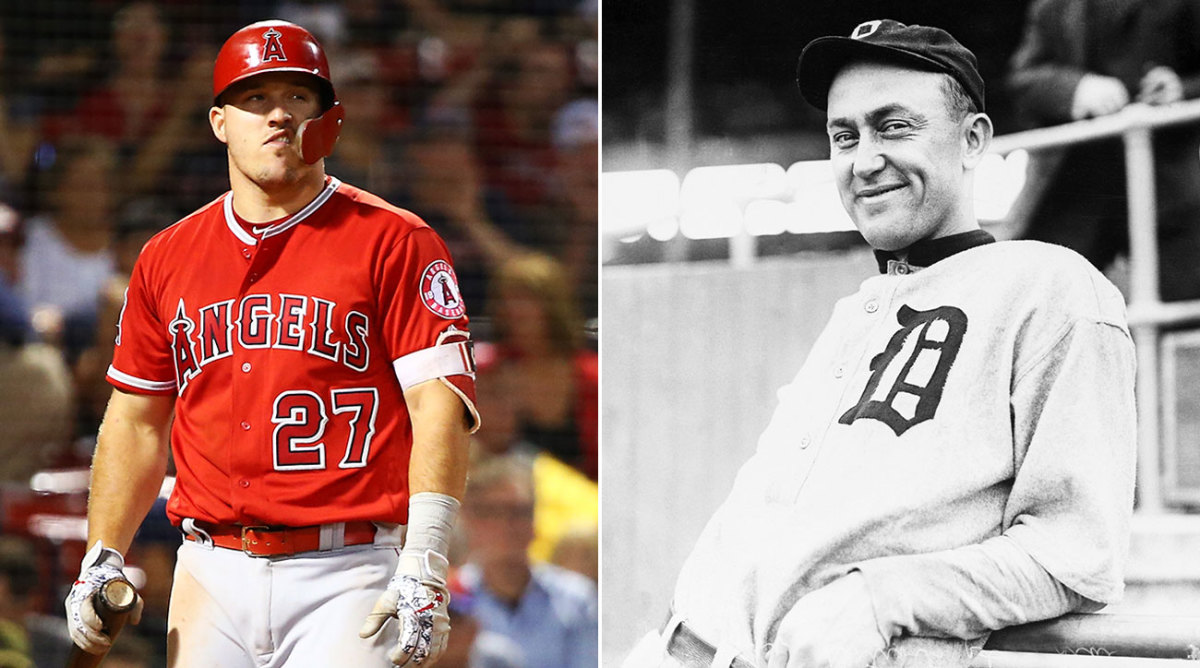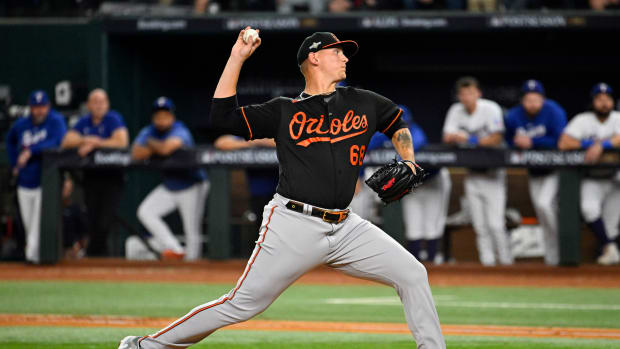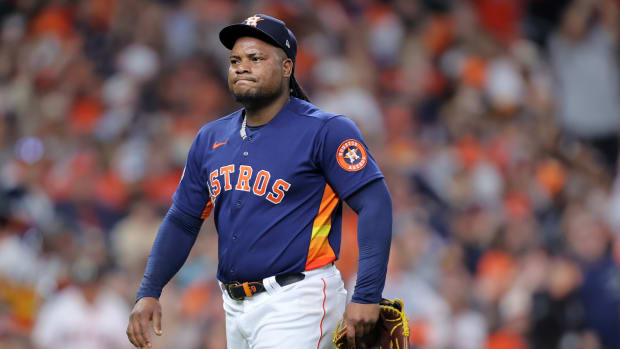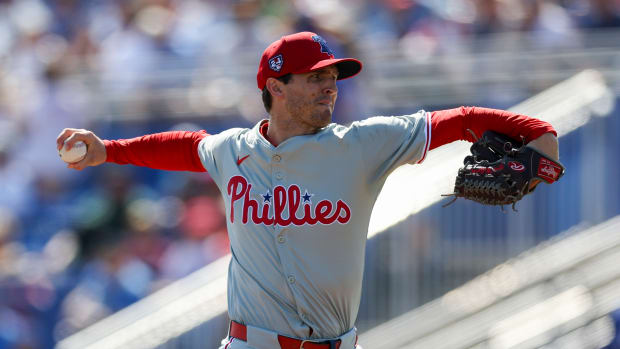A Brief History of the Many Times Baseball Has Died

By August 1939, I started to crack. I’d seen plenty of big outbursts and flimsy claims and weird defenses; I assumed I’d seen it all. Then I read the line about the “embryo Ty Cobbs,” softened by the motor cars.
I was trying to understand how baseball had started to die. See, I’d heard that baseball was dying. I’d heard this for my entire life. This is true for my father and his entire life, and his father and his entire life, and his father and his entire life—because it’s forever been true for baseball. It’s been declared at risk of death since it was born. Of course, the precise causes of death vary by decade and person and context. (Lately, you’ve probably heard about problems with attendance, with home runs, with pace of play, and, obviously, with millennials.) Some are far more credible than others. But the core is the same. There’s someone who believes baseball is dying. There always has been.
I wanted to understand. So I decided that I’d rewind a century and a half, I’d search news archives for “is baseball dying,” and I’d look at 100 articles written on this premise between 1869 and 2019. I’d look for patterns, or I’d find the secret elixir to life with all this talk of death, or I’d simply come to hate the whole endeavor. In any event, I’d survey 100 articles—100 discussions of doom—and see where they led.
Which, eventually, put me in August 1939.
It was one that initially seemed familiar. You had Charlie Grimm—who, at the time, had just left a career as player and manager to work in radio broadcasting—saying that the modern game was “weaker than at any time in my twenty-two years with the majors.” He felt that pitchers “squawk a little too much about their sore arms.” Generally, he found players “a lot more temperamental”; it was now “easier to play” which he believed “spoil[ed] some of them.” The New York Daily News agreed with him, and one writer ruminated on the causes:
“Today, few boys hike six miles to school. Motor cars, elevators and telephones have softened many of our embryo Ty Cobbs…. Baseball is dying in our high schools. It is losing ground in our colleges to high-pressure football, which calls for spring grid training. It is dying on the semi-pro lots and in the country villages.”
Ah, yes, those famous threats to baseball. What a miracle that the game has survived the elevator.
There were claims that felt obviously dated. (A reference to the “motor car” will do that.) Understandably, there were several tied to individual events that stoked specific fears about the welfare of the game: World War I, World War II, various labor actions, the invention of television. But there were many pieces that felt weirdly unfixed in time. These seemed to tie themselves not to given decades so much as to given feelings, which seem so established in baseball as to be foundational to the professional game. Like, say, concern over small crowds in a season that runs too long:
This could easily fit in any number of modern discussions—had it not actually ran in the Oakland Tribune in 1905, after the writer took a trip to see the big leagues on the East Coast.
Or the fear that baseball has lost too much ground to other sports, as seen by the Lansing State Journal in 1929:
Or the idea that baseball is just too slow for modern society (1955, from the JacksonClarion-Ledger, and also, in principle, countless takes from decades of morning talk radio and bar-room conversations and phone calls from your grandfather):
Or the loaded combo of games being too long, football being far more exciting, and players lacking personality? (This was 1962, after a poll asked writers if football would replace baseball as the national pastime by 1982. Results: 58% said yes, 12% said that it already had.)
And if you’d prefer one tied even more closely to 2019, try the idea that there are now too many home runs… as you would have found back in 1967:
(“Dixon” here was David F. Dixon, executive secretary of the Louisiana Stadium and Exposition District Commission, discussing plans for the stadium that would become the Superdome, in an Associated Press piece from New Orleans. And, for what it’s worth, in 1967, home runs actually decreased to their lowest point since 1952.)
To read these one after another is to be hit by a dizzying sense of déjà vu. You’ve seen this before. We’ve all seen this before. (And if this line of thinking feels familiar, too, I saw after wrapping my 100-article survey that Bryan Curtis of Grantland took his own journey through the archives with this theme back in 2014.) But the debate is replayed, over and over, with little concession given to the fact that it’s a rerun. Eventually, “baseball is dying” solidified into such a guarantee that rebuttal columns started to pop up without bothering to say who, exactly, they were trying to rebut. “Baseball is dying” was the naturally assumed starting point, because of course it was.
The discussion grew stale so quickly that these rebuttals soon became openly playful. In 1893, a syndicated wire piece jokingly drew a line from these death calls to Edward Gibbon’s six-volume Decline and Fall of the Roman Empire: “It was predicted last year that the interest in baseball was dying out, and there were many Gibbons who wrote its ‘decline and fall.’” (Yes, 1893, still before the foundation of the American League.) The Sporting News got sarcastic about the whole deal in 1935: “Baseball falling off, eh? Pittsburgh sets a brand new record for a National League game with close to 41,000. New York establishes a new mark for the entire league, with 64,000… Yep, baseball is dying a miserable death.”
Attendance is a recurring character in these. Attendance is down? Well, that’s all the proof of death needed. Attendance is up? No matter. Maybe someone’s lying about the official figures. (A New York Star writer manually counted every single person in the New York Giants’ crowd at the Polo Grounds one day in August 1890, because he suspected that the numbers were being messed with; he found 734, while the team had reported 1,826. Headline? “Baseball on the Wane.”) And if attendance had just received a jolt from expansion… naturally, that meant that the whole endeavor was in trouble, because the increased interest was only temporary, and when it faded, MLB would be in trouble because it had watered down the level of play with the new franchises. Naturally.
But there doesn't have to be any numbers used to claim that the game is dying.
Sometimes, it’s the players. They don’t play ball like they used to. “All anybody wants to do is launch the ball… There are no hit-and-runs. No stolen bases. Nothing,” Lou Pinella just said to USA TODAY. That’s technically different, but spiritually quite similar, to this contrary gripe from an executive in 1952: “Baseball is dying for the lack of the fan-making, customer-drawing excitement that goes with the home run and the fat score.” Or it’s that players aren’t interested in individual stardom. (See: Any criticism on this front about Mike Trout. Or this, which Magic Johnson told the Boston Globe in 1993: “I don’t know what’s wrong with baseball, but they have to solve their problems. Kids just aren’t relating to it anymore. They relate to superstars. They relate to basketball players.”) Or, of course, players are seen as greedy. In 1901, a syndicated piece read, “A quarter century ago, this sport was simple, clean, easily enjoyed, free of selfishness and guile. Today, alas! it has fallen into evil ways, become the tool of greed, the victim of hucksters.”
Go forward almost a full century, to 2000, to see essentially the same thing. Then, Bill Plaschke wrote at the Los Angeles Times that baseball was dying from clogged arteries: “Clogged with $25 million a year for a player who will fail nearly 70 percent of the time at bat and touch the ball five times a game in the field. Clogged with $11 million a year for a pitcher with a losing record.”
Sometimes, it’s the owners. There aren’t quite as many clear criticisms of greed for them as there are for players—curiously, as owners stand to make far more money than players, and profit-seeking from an owner can do far more to alter the course of a franchise, but no matter. There are still some: “[Baseball] has passed from owners who were sport-minded into the hands of syndicates who are money mad—and it is now fast-developing into a situation where it is losing its sporting value and becoming a racket,” one worried executive told the Associated Press in 1959, in a refrain that would reasonably bubble up anew every time a franchise moved cities or demanded a new stadium.
Meanwhile, some take issue with owners’ ability to market their clubs and innovate: “What baseball needs is novelty,” went one wire story in 1940. “The sport has been crying, and loudly, for an injection of imagination, a snort of color, and a transfusion of change.” And there are… other criticisms of owners, too. “The owners are also overdoing it a bit with the scoreboards,” griped the Baltimore Sun in 1972. “It used to be that everybody went for a beer between innings so they wouldn’t miss anything. Nowadays, the fans don’t mind heading for the concession stands while Hank Aaron is up with the bases loaded. The important thing is to get back to see the scoreboard recite the Declaration of Independence in three-quarter time while skyrockets reenact Teddy Roosevelt’s charge up San Juan Hill—between innings.”
And, finally, sometimes it’s society. It’s all of us. It’s because we’ve found other hobbies to occupy us. “Years ago, when the automobile was a novelty, attendance at baseball games was the favorite recreation of men… Now, with every person in a dozen or so owning an automobile, conditions are different,” lamented the Dubuque Times-Journal in 1915. It’s because we’re too uncouth. “We have certainly experienced a decline in civility. And just as baseball may have once been a national expression of civility, football maybe pointing up our new churlishness,” Columbia University historian Jacques Barzun said in 1976. It’s because we’re too restless. “More young fans are seeking the instant gratification provided by the dunk-a-minute pace of pro basketball, the search-and-destroy machismo of pro football,” wrote the St Louis Post-Dispatch in 1992. Or it’s because we’re just letting everything go to hell, generally: “’As American as baseball and Mom’s apple pie’ is demonstrably obsolete, since Mom’s apple pie now comes little pseudo-tins and tastes like wet cardboard,” wrote the columnist William S. White in 1972.
The causes of death are financial, cultural, aesthetic. They’re sometimes backed by statistics. They’re typically cast as universal. But they’re frequently rooted in something far more individual. Many are fundamentally personal; they do not mourn the general death of baseball, they mourn the death of a specific experience of baseball. To read 100 baseball death reports is to see 100 discrete personal fears fractured and laid all kaleidoscopic onto one game. (It is, also, to feel a bit crazy and lose your sense of context repeatedly, but that’s neither here nor there.)
It’s telling that this whole framework is fundamentally oriented toward history. If baseball is dying now, it must have been alive then. It’s all very sentimental. Naturally, the solution is often positioned as a return to what it was, rather than a vision of what it could be. But I think the latter presents a far more interesting idea. How does baseball live? offers more to examine, structurally and personally, than does Why must baseball die?
“Every once in a while some pessimist, the cockles of whose heart do not warm to a three base hit, sits up and takes notice long enough to remark that baseball is dying out… As a matter of fact the game is faster today than ever before. The players are more skilled, the game has reached a higher point of perfection, the players are of a better order of intelligence and take better care of themselves than they did in the old days.”
This ran in the Kansas Weekly Capital in 1905. Baseball is dying. Long may it live.








































